Economic soap for fighting tool. Ash - to combat pests
And the fruit trees bloomed in the garden, the fruit trees bloomed, the first spring flowers bloom in the corner, and the first sprouts of the future flower garden are sprinkled from under the ground. All gardeners lovers are looking forward to starting the summer to enjoy the first fruits of their work. And it seems everything would be fine if it were not for the invasion of "plague" called the word. Dachnips are familiar with this problem, the only thing - it is impossible to find an excellent tool that would allow to get rid of Tly. It, of course, exists, but somehow it is not desirable to use chemicals on fruit trees. Yes, and there is no guarantee that the droplets of the solution will not fall on strawberries, raspberries or blueberries. Moreover, and if on your farm there are a couple of cute dogs and cats, who like to pinch young grass in the garden? Unless of course, it's hard, then carbofos, pyrimophosphetyl, befentrin, etc. goes into business. Today in any flower shop consultant will offer you good toolwhich will help get rid of the Tly. But, in my opinion, this is an extreme case!
TLL - Pest of gardens and gardens
In the fight all means are good, but this is not our case. There are natural inxcides - infusion of garlic, rapeseed oil, burning red pepper, economic soap, etc. We will try to get acquainted with effective meansthat will help us get rid of Tsi for all summer.

How to get rid of Wolf Wood
So, how to get rid of the rolling with harmless facilities for the plant and fruits. There is a lot of good recipes, from which the garden fault is afraid and forever leaves your garden. The most common method is an ordinary wood ash. Take a couple of twigs and raise a bonfire. Sweatshirts are asleep in a basin with warm water and mix well. Nothing terrible will not happen if you will get small burnt twigs and swirls. Now add liquid economic soap. If you do not have it at hand, you can replace it with any means for washing dishes. Give the solution to break 20-30 minutes and take on plant processing.
Before applying any means, it is desirable to manually remove the TRU from the twigs and only after that proceed to the processing. Moisten the sponge into the solution and gently rinse the affected places. Cannot handle plants in bad weather or before the rain!
The next day, you will find an interesting picture of the lumps of glued and dried tribes.
How to get rid of thephids on blooming plants
Naturally, many of you will have a question how to get rid of aphids on flowering plants? Is it possible to apply the above-described method? Of the logically understandable reasons, the use of ash with soap for flowering plants is impossible. We are not sure that the processed flowers in the near future will restore their former beauty. But we would like to recommend you enough an effective way - Parsley. Simply, in several places put parsley into your rosary. The word from her is horrified!But, in the event that it still, the failure will still spread on colors, we recommend good way - detergent.
Pour in the container with warm water and dissolve a little detergent for dishes in it. Fill the driver and apply a foam with a sponge on a half-walled rose bud. Closed buds and flower stems rinse with a liquid solution. Do not worry about soap foam. It very soon dries and falls along with the remnants of the Tly. The only condition is not to apply a solution on flowers in sunny weather to avoid the sun burns of the leaf. By the way, this method of dacms is used for processing vegetable crops.

Milk - an effective method of combating garden plague
Nettle will help get rid of
To get rid of Tsley dacms and gardeners, lovers use any methods only to keep the beauty of the blooming garden and provide themselves with a good harvest. The spectable technique has proven well. To prepare the solution, you will need to assemble 800 grams of nettle during its flowering period. Then lower the nettle in the pelvis and fill it with five liters of water. Give the solution to 5-6 days and strain through the gauze. The finished solution is in 10 liters of water and spray them the affected plants. The procedure is recommended to be carried out 2 times with a period of 3 days.
Pasting ants in the garden
You should also know - where the word, there are ants. And at this stage you still need to get rid of the invasions of the ants, who like the sweet trail. From ants you can get rid of special means that you can buy in any flower shop. But the most effective remains 2 folk methods:
lemon,
Manka.
Buy a fresh juicy lemon and cut it with rings. Determine the place of accumulation of ants and lay out the rings of lemon. After 2 days, lemon will dry off, and ants, respectively disappear.
Sprinkle the paths for which ants move. After a while they will leave your garden.
To achieve a good harvest, it is necessary to take care of the beds and the garden in a timely manner, destroy pests and weeds. Only in this case you can enjoy the fruits of your work. Of course, the ways to get rid of Tlima are a big set, we only told about the main most secure.
And here are assistants))


Good luck to you in the fight against the fertile and blooming garden!
What if the whole army of insects decided to choose to breakfast, lunch and dinner is that we are growing in the feet in the country for your own - the table? Of course, you drive out flying and crawling thieves from your sites! Moreover, there are no people's experience - our people are observed, ingenious and a great fifteentist. He tried a huge number of methods of struggle - from a peaceful expulsion by clicking from a sheet to a complete mixing with the ground with a boot heel.
Consider today the most proven, easy-to-use and safe recipes that can be successfully used against insects - pests of our sites. All components, as they say, at hand: ash, salt, pepper, mustard, vinegar ... and no chemistry!
Helps from, and cabbage tick, cabbage flies, apple-tree frozing, scoop, slugs and snails

- Recipe 1 - Dry
- Recipe 2 - Broth
- Recipe 3 - Infusion
How to use it?
Opported cabbage for dew or after rain. Sprinkle as a rolling soil in the rivers from the cabbage flies. Spray with infusion or decoction fruit trees, cabbage, cucumbers, zucchini, pumpkinIt will help against California shields and apple-leaving fruzens, ants will be repunted.

- Recipe
How to use it?
Fruit trees spray after leaffall or spring to the dissolution of the kidneys.Approximate expense standards:
- on a sapling and a moody tree - 2 liters of solutions
- for an adult fruit-growing tree - up to 10 liters
- on raspberry bush - 200 ml
- on a bush, a sorodine and a hideman - 1.5 liters
Tobacco dust
Get rid of, medalers, triples, cruciferous flewrs, \u200b\u200bspiders, peelers, leaflers, whils, moths, web ticks and ants.
She disorientates pests, drowning and distorting the smell of "feed" plants.
- Recipe 1 - Dry
- Recipe 2 - Infusion
- Recipe 3 - Broth
- Recipe 4 - Eroticing
How to use it?
Cabbage dusty, flowers - georgin, carnation, gladiolus, irises, peonies, dolphiniums, Alissaum, aconite. Flowers needed to dough before and after flowering. Spray fruit trees, currants, gooseberries are sprayed with infusion or decoction. Divorce fruit trees with strong infection with media and soot.Powder mustard
It will help from tool, ticks, medalers, plotting, wire, onion, carrot and cabbage flies and mugs
- Recipe 1 - Infusion
- Recipe 2 - Infusion
- Recipe 2 - suspension
How to use it?
The suspension is effective against the slugs - it is watered by aide. Influences spray plants. The dry mustard is being added to the holes when disembarking cabbage seedlings, they also sprinkle and the soil around the seedlings. And from the provers will help the living plants of the mustard, landed in the aisle potatoes.They will help get rid of scoop, cabbage whitening and moths.

- Recipe
How to use it?
The infusion of the leaf leaves spray the plants during the fly and in the pedariod exit from the eggs of the gusenitsa.It will help to drive a fire from currant and gooseberry bushes.
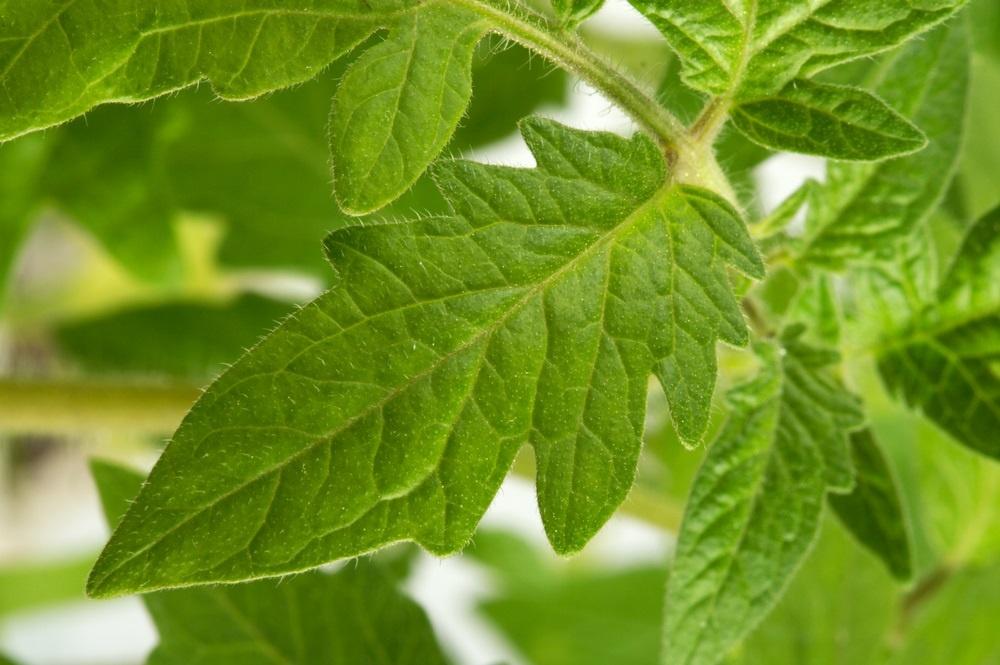
- Recipe
How to use it?
Spray currants and gooseberries during the caterpillage period.Sit down the site from tool and triples, openly living small caterpillars, larvae of beetles, medalers and slugs.

- Recipe 1 - Infusion
- Recipe 2 - Broth
- Recipe 3 - Broth
Scattering the pepper in the soil in the aisles of the Radis and cabbage, scare the bobs and cabbage flies.
Helps against Tly, custom tick, Malinous Fly
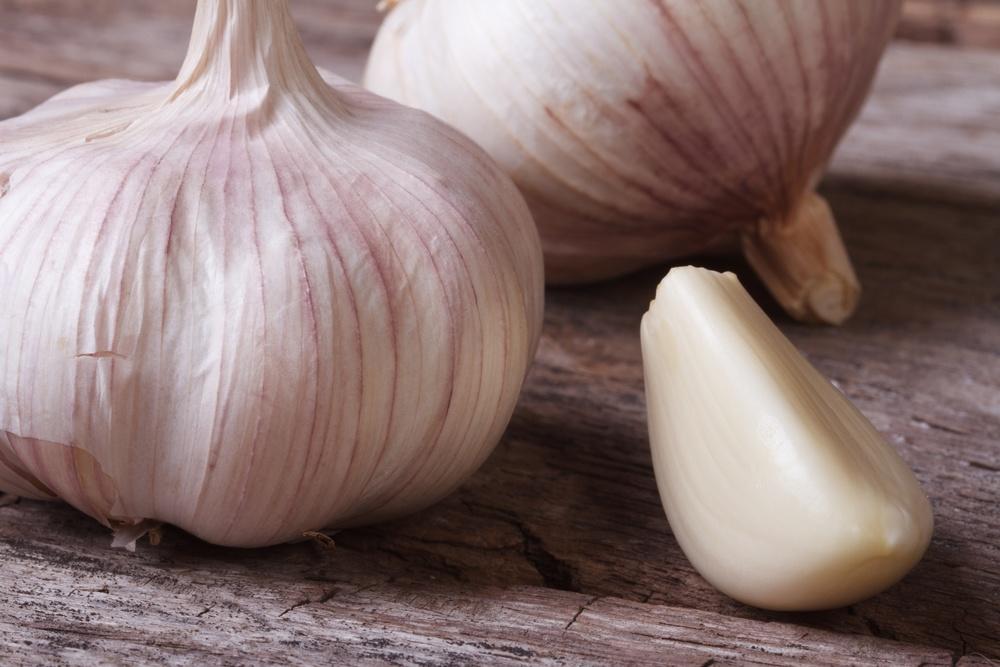
- Recipe 1.
- Recipe 2.
How to use it?
The prophylactic spraying from Malinous Muhi is recommended to spend in mid-May.It will help to get rid of the cruciferous flew. Apple vinegar Save from fruzing.
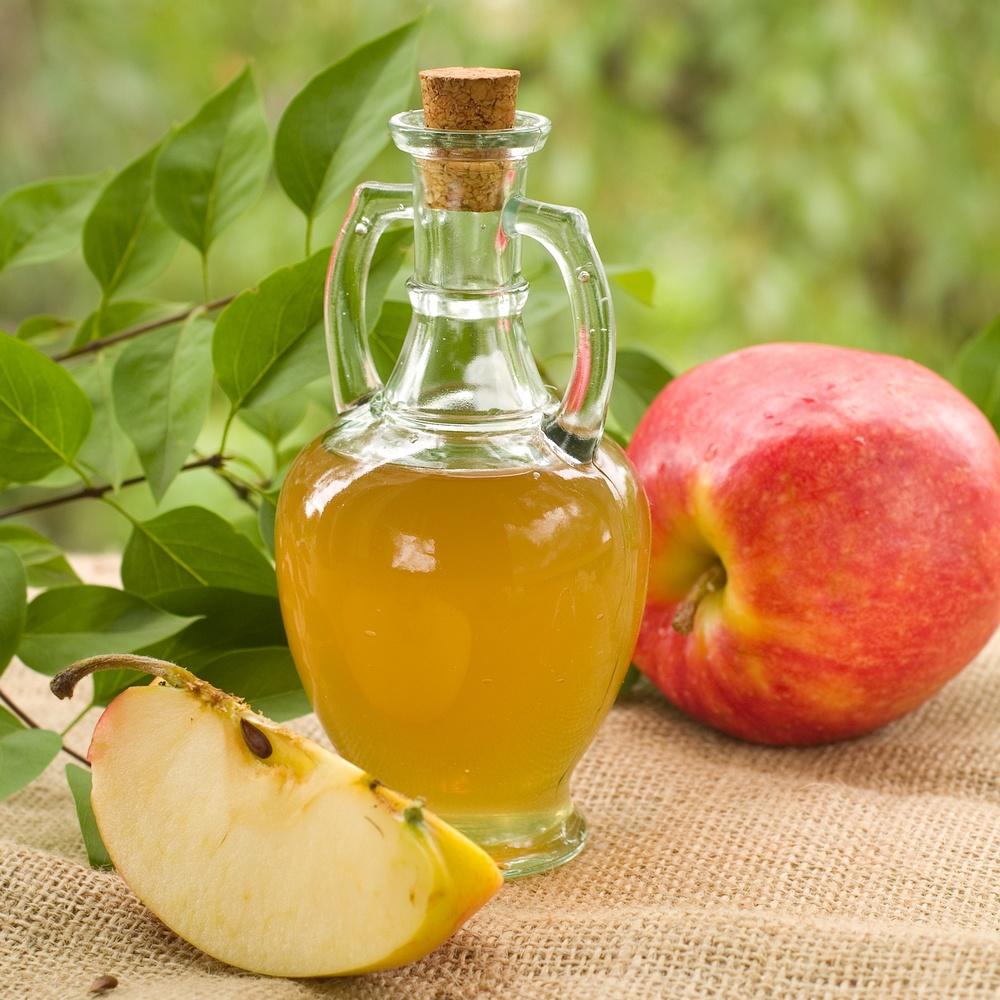
- Recipe 1.
- Recipe 2.
How to use it?
At an altitude of 1.5 - 2 meters, such a variety in the banks to cheer on the branches of the apple tree. Apple fruit is going to banks. Change traps once a week.Get rid of the Medeanniki, Tly and a web tick, scare the ants.
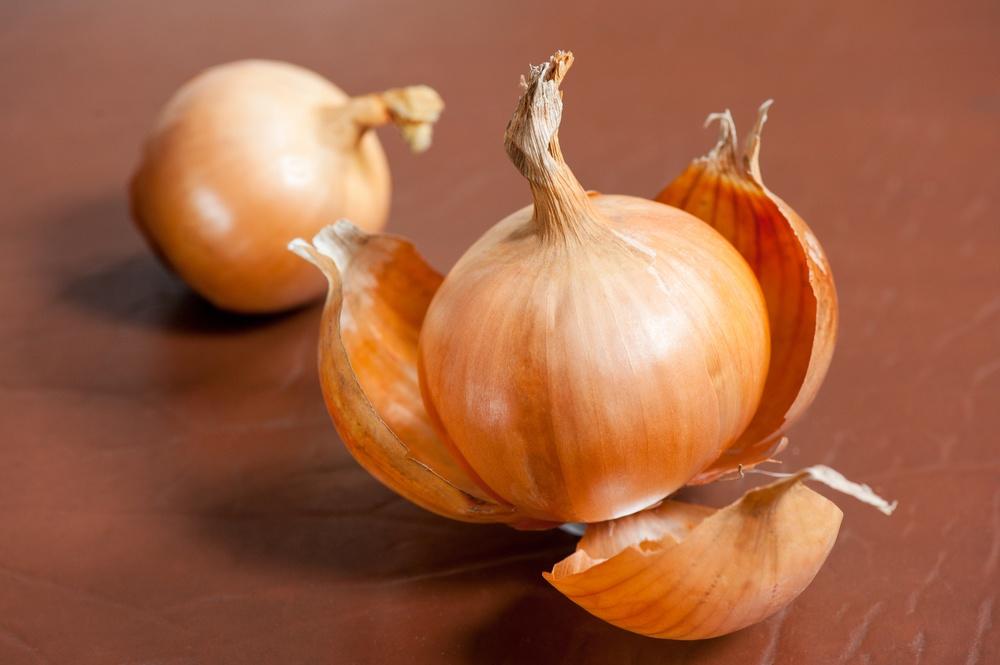
- Recipe 1.
- Recipe 2.
For deliverance from a spider tick Recipes "Customized":
- Recipe 1.
- Recipe 2.
On deliverance from the paw-tick folk methods In the next video, the professional gardener Anna Rostislavovna tells.
Onions, landed near the cabbage and cucumbers, will protect the latter from the lodge.
There is evidence that onion odor does not like trips, frozing and vegetable bugs.
Methods of combating insect pests a lot. The main thing is that everything that we use to get rid of our sites from those who spoil and destroys the harvest did not harm the nature and us. Because the principle is "not harmful" and today remains the most relevant in land use.
If you have interesting and safe recipes for combating in your secret cottages, we will be happy to make them public. It's general))
The ash is a mineral residue formed when burning various organic substances. First of all, it is a good potash-phosphoric and lime fertilizer. But it contains even 30 mineral components, including a mass of trace elements. It has potassium, calcium, phosphorus, magnesium, microelements - iron, silicon, sulfur, boron, manganese and others. But it does not contain nitrogen at all. It is absolutely no chlorine that adversely affects the growth of many cultures (for example, cabbage, potatoes).
The composition of ash depends on the material of the material. The ash of birch firewood is rich in potassium and phosphorus (14 and 7%, respectively), calcium (over 30%). The valuable ash gives the potato tops, which contains over 20% of potassium, to 8% phosphorus and about 32% of lime. Cali and Calcium is very rich asola from the straw buckwheart and sunflower. The least valuable is the ash of peat and stone coal.
Increased calcium content in ash determines its deoxidizing properties. The greatest number of calcium compounds contains the ash hard and coniferous ash. However, one should not neglect the burning of weeds, the dissemination - in such ash, more potassium.
When making ash, the soil is dedicated, and at the same time - the suppression of pathogenic microflora preferring the acidic medium for development. She is also unloved by some pests that can be successfully used to safely fight them.
The introduction of ash is very desirable for those cultures that prefer soil from weakly acid to alkaline. Flower cultures are calendula, left, pansies, gypsophila, nasturtium, petunia, fragrant tobacco, tulips, lilies, hyacinths, chrysanthemums, asters, bells, daisies, clematis, roses, sage, cottberry, dolphinium, barberries, peonies. From vegetable crops, gratefully will be treated with cabbage ash, tomatoes, potatoes, cucumbers, rooted roots. In transplants indoor plants It is useful to add 2 tablespoons of ash for 1 l of soil for your favorite geranium, fuccias, cyclamen.
Usually, the ashes are brought in dry when the soil is prepared for plant planting. Norms of application depend on the acidity and quality of the soil and the needs of grown crops. Store ash in a dry place, since when wetting it loses one of the most valuable components - potassium. Good quality ash can serve as a substitute for potash fertilizers. However, the wet ash retains the mass of valuables, it is used in composting or for introducing in liquid form. You can add infusion of ash into solutions of mineral fertilizers for feeding, but it is impossible to combine it with solutions of organic fertilizers.
Infusion of wood ash
For the introduction in liquid form prepare infusion of ash, for which it is "brewed" with boiling water. In this case, soluble substances occur, which become more accessible to the assimilation by plants. The tablespoon "with a slide" is poured with a liter of boiling water and insist a week, after periodically stirring. After that, the solution can be used both for fertilizer of flower beds and beds and seedlings of these crops. For seedlings, it is possible to use pure infusion of ash or in a mixture with solutions of mineral fertilizers every 2 weeks.
Ash in the fight against pests

The ash can serve as a healthy in the struggle in some annoying pests.
Against the cabbage and caterpillars. Infusion is prepared on the eve of the processing, for which 1 cup of ashes poured 10 liters cold water, stirred and leave all until the morning. In the morning, stirred and filter. Spray plants before the start of the summer of butterflies (at 5-6 hours in the morning), capturing the lower part of the leaves. Processing repeat daily.
Against Tli Make a decoction: 300 ashes siey, poured with water and boil 20 minutes. They give to stand, parted, bring up to 10 liters and used for treatments.
Against pulse dew gooseberry. For the first spraying, the ash bucket is boiled in three buckets of water for an hour, cooled, filtered and then used.
For the second spraying of 0.5 buckets of ashes take 2 buckets of water and boiled 1 hour. Apply this solution after the formation of uncess.
Against the larvae of a colorado beetle. Discarding the larvae of the colorado beetle dry ash leads to their death over 2 days.
Against cruciferous flea. Morning pollinating the woody seedlings of cabbage cultures with the use of Sita scares pests.
Against slugs. Lizney access to plants limit any substances that irritate the sole of mollusk. In this regard, Metaldehyde is able to replace the ash - it sprinkles the ground with concentric circles around the plants (however, this method is unacceptable for acid-loving plants). The disadvantage of this method is that, wet in the rain, the ash ceases to act, so it is necessary to either resume it with the onset of dry weather, or alternate with red ground pepper, and even better - in parallel to put traps for slugs from the boards, under which are wet rags. Every day traps are checked and collecting slugs. In the aggregate, these methods allow them to do without the use of chemicals.
Read also Herbal frisks for feeding plants
greenInfo.ru.
Ash like fertilizer - a great result without cost
 The ash is an absolutely available and highly efficient phosphorus-potash fertilizer, containing a mass of substances and microelements necessary for the development and growth of plants. It should not be bought, you do not need to use transportation for transportation - such a fertilizer can be done independently. Availability and use of ash is undoubted! Although it should be noted that the qualitative characteristics and the mass proportion of certain microelements may vary depending on the raw materials used to obtain the ashes.
The ash is an absolutely available and highly efficient phosphorus-potash fertilizer, containing a mass of substances and microelements necessary for the development and growth of plants. It should not be bought, you do not need to use transportation for transportation - such a fertilizer can be done independently. Availability and use of ash is undoubted! Although it should be noted that the qualitative characteristics and the mass proportion of certain microelements may vary depending on the raw materials used to obtain the ashes.
Important! When using ash as a fertilizer, it should be remembered that when burning raw materials, nitrogen is destroyed, respectively, its lack must be compensated by any nitrogen-containing additives.
The averaged indicators of the main elements in the ash after burning:

Potassium
- Wood:
- coniferous - about 8%;
- deciduous - 14%;
- vine grape - 40%.
- Herbate raw materials:
- straw - about 20%;
- potato tops - 40%;
- sunflower (stem, leaves and head) - 40%;
- dried grass (nettle, Swan, Osay, etc.) - 30%.
- Buckwheat, Sunflower Luzga - 35%.
- Peat - 10%.
- Shale - no more than 2%.
Phosphorus
- Wood:
- coniferous - 6%;
- deciduous - no more than 10%.
- Herbate raw material - 1%.
- Peat - 1%.
- Shale - 1.5%.
Calcium
- Wood - 45%.
- Herbal raw materials - 10-20%.
- Peat - 20-50%.
- Shale - about 70%.
Important! In no case cannot be used as a fertilizer ash after burning: polymers, domestic garbage, rubber, colorful glossy magazines, colored paper and synthetic materials. When using such a "fertilizer", the crop can at all forget - the Earth will be poisoned for many years.
Use of ash on different types of soil
- Agrotechnics do not advise the use of ash as fertilizer on soils with high alkalinity. This is due to the chemical characteristics of the ashes cooked from any raw material - it additionally stuck with the soil, which can significantly impede the nutrition of plants.
- Suglinist and clay soils - the addition of only 300-500 g / m² of ash, significantly improves the fertility and structure of the Earth. Even after one-time fertilization, a positive effect can last up to 4 years.
- Sour soils - when making wood ash as fertilizers, a certain balance is created between the natural reaction of the Earth (acid) and an alkaline component (ashes), which has a beneficial effect on the growth and development of plants. The exceptions are cultures, initially preferring to acidic soil: potatoes, radishes, bakhcha and some others, as a result of whether these plants need to fertilize the ashes, pre-weighing possible benefit And probable harm.
Ways to use ash as fertilizer
In practice, ash as a fertilizer, is used by 3 ways:
- Dry scattering in the rolling circles of trees, under the bushes, in the rustles of garden crops and in the wells before planting seedlings.
- Spraying or watering plants, concentrated solution and / or infusion cooked from ordinary water and ashes.
- Bookmark into a compost pile (2 kg / m³). Subsequently, the compost is used traditionally.
 How to use ash like fertilizer?
How to use ash like fertilizer?
What amount of ash is necessary for a particular culture?
How to properly prepare a solution of ash for watering and spraying?
Familiar questions? Well, experienced gardens and agronomists, recommend:
Tip! Collaborated ash in water, when watering, it is necessary to constantly blame or stir, in order to eliminate its settlement to the bottom.
- Before planting seedlings of tomatoes, pepper and eggplant, it is necessary to add 5 dessert spoons of the ashes into each well and slightly mix it with the ground or add it to the peroxide at the rate of three 200-gram glasses per 1 m².
- Lawn grass - before sowing seeds add feeding to the selected area, 300 gr. per 1 m². It is not recommended to sprinkle seeds already.
- The fertilizer of cucumbers, tomatoes and cabbage during the growth period can be carried out, pre-cooked solution: 100 g / 10 l (ashes / water), after mixing the ingredients in the infusion is ready after 24 hours. Under each plant, pour out 500 ml of infusion or make longitudinal grooves and evenly shed them.
- For a good yield, cabbage is recommended to make fertilizer repeatedly, and every 10-12 days. It follows the procedure during the entire growth period.
- For trees it is useful to make feeding at least 1 time in 3 years:
- adults - 2 kg for each tree, deposit into the area of \u200b\u200bthe priority circle in its pure form, you can make a special groove (deepening 10 cm) around the circle and make feeding there. With arid weather, the subsequent abundant irrigation is obligatory;
- saplings - 1 kg of ash ripped into a pit prepared for planting, where to mix it with the ground, then the landing is made traditionally.
- The fertilization of ash floor plants is also widely used. For this, the remedy is poured into a flower pot (1st art. L. For 5 l. Land) or prepares infusion (2 art. L. By 6 l. Water), which is used for irrigation.
Tip! You can feed the trees and rooted seedlings with an infusion prepared from 1.5 kg of ash and 12 liters of water. The resulting composition, simply, evenly pours out around the plant, not further than 0.5 m. From the barrel.
The use of ash for plants as protection against diseases and pests
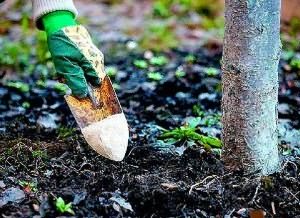 The use of ash for plants is reduced not only to the fertilizer of the soil, it is also an excellent agent against many pests and diseases:
The use of ash for plants is reduced not only to the fertilizer of the soil, it is also an excellent agent against many pests and diseases:
- Processing from the cruciferous fleece is to mix ash and tobacco dust in equal proportions and pollinate the resulting plant composition.
- The ash infusion is very effective when used in the fight against malievable dew, as well as tool. It is preparing very simple, it is mixed for this: 12 liters. Cold Water, 110 g. Economic soap and ash, 20 g. urea. All ingredients are thoroughly mixed and insisted for 2 days.
- It is believed that the regular addition of the ashes into the land of the garden, contributes to the extermination of the wireman.
- As the prevention of various fungal diseases, plants are also pollinated by ashes.
Tip! Spray the ashes only when the street is full, it will give a guarantee that the tool will fall on those plants that were planned. top scores Gives pollination in the early hours, when the dew has not slept.
Wood ash like fertilizer - video
glav-dacha.ru.
Wood ash like fertilizer: composition, application, application under the plant
From the presented formula, it can be seen that wood ash as fertilizer contains one of the most important elements of the plant - calcium. It is necessary for normal growth in green mass at the initial stage of development, and provides balanced nutrition throughout the growing season. This is especially important for garden crops that form a greater above-ground part, for example, tomatoes, pumpkins, cucumbers.
Table: variations of ash composition, depending on the type:
Calcium carbonate
With the use of ash, active growth is observed as a fertilizer, and more compact (by time) maturation of such representatives of the family of the Parotnic, like tomatoes. Calcium carbonate (Caco3) affects the activity of metabolic processes. It enhances the velocity of substances in the cells of the plant organism, and normalizes the flow of biochemical processes. This property allows you to use ash like fertilizer. This element for colors is especially useful, as it affects the magnitude and pomp bud.
Fertilizer cucumbers ash contained a large number of Calcium carbonate compounds helps them fully develop. This plant is distinguished by the continuous growth of vegetative tissues, and CA serves as a link in the transportation of the useful substances into the cells.
Calcium silicate
Calcium silicate (Casio3) is a substance that, with a compound with pectin components, blesses cells while holding them together. Helps actively absorb vitamins. For example, onions very sharply responds to the lack of Casio3. There is drying and bundle of bulbs. This situation can be corrected, watering the plant with an inast of ash.
Calcium sulfate
Calcium sulfate (Caso4) is a calcium salt of sulfuric acid. It is part of the superphosphate, one of the most popular mineral fertilizers. When applying as part of ash, it has a less strong, but a longer exposure to plants than in the composition of mineral feeding.
Calcium is especially important for the growth of seedlings., during the formation of green mass, for example, for flowers and green, onion and parsley. With age, this element accumulates in stems and leaves, and after his death returns to the soil.
Calcium chloride
Calcium chloride (CaCl2). Many sources assure that wood ash does not contain chlorine. But, in accordance with the formula, we see that calcium chloride includes its composition. Is it dangerous for plants? You can say with confidence that there is no. Two ion elements that are included in this compound, on the contrary, are of great importance for healthy nutrition fruit and vegetable crops.
Almost all the famous Flora science uses chlorine to enhance growth throughout the entire growing season. It is constantly contained in the green mass of fruit and vegetable crops in the amount of up to 1% of them. total weight. In grapes and tomatoes, its content is somewhat higher.
Calcium chloride activates the formation of enzymes, as well as photosynthesis, helps to transmit nutrient elements. Stone salt helps to fully use a small stock of these substances, if applied wood as a fertilizer.
Another useful property this chloride - it increases the winter hardiness fruit trees and vines of grapes, which allows you to grow this thermal-loving culture even in quite cold regions (Pskov, Leningrad region). It helps to maintain soil homogeneity, avoiding its intume, which allows you to protect the roots from the penetration of cold air.
CaCl2 helps to cope with the following plant diseases:
- Rotation of apples laid on storage.
- Fruit blackening in tomatoes.
- The blackening and rotting of potatoes, both in the period of growth and during storage.
- Premature friction of grape berries.
- Molding strawberries when re-crop.
- The appearance of the "black leg" at roses.
Thanks to its "drying" property, CaCl2 helps to defeat many diseases of agricultural crops caused by horse and stem rot. It is very useful for roses. Due to this element, infusion of ash can be used not only for garden, but also for indoor plants, for the improvement of land and prevent the growth of harmful microorganisms.
The presence of CaCl2 in the soil allows us to convert nitrogen-acid ammonium into a nitric acid salt, which is very useful for the vital activity of plants. This is a very important aspect when fertilizing cucumbers ashes, as they are sensitive to a lack of nitrogen.
Rock salt
Stone salt, which is part of ash, it is a rust catalyst For plants such as cucumbers, pumpkins, zucchini, as it allows the cells to hold water, accumulating and applying it in case of drought.
Orthophosphate potassium
Potassium orthophosphate (K3PO4). This is a substance helps adjust water balance plants. With a lack of this substance in the leaves and roots, ammonia accumulates, which inhibits growth. Also, the potassium salt of orthophosphoric acid helps to increase the winter hardiness of thermal-loving plants, for example, grapes. Potassium also creates a favorable alkaline environment for garden colors, such as roses, lilies and chrysanthemums.
Magnesium
The ash relates to fertilizers, which include three magnesium compounds, cumulatively acting on various metabolic processes in fruit and vegetable cultures, as well as in cereals. This element, in some way, is a "partner" potassium, they together participate in the development of energy by plant organism.
Magnesium sulfate is involved in the formation of carbohydrates, which become a building material for starch and cellulose. For a rod root system (at roses, for example), the presence of magnesium fertilizer is very important, since it consumes it in a greater, compared to the ground part, volume.
Sodium
The last element is in the list, but not the last of importance. It activates a number of enzymes that do not react with other substances from chemical composition ash. For example, tomatoes belong to sodaphyl, plants that react positively to sodium, especially when not enough to be provided with potassium. It improves their water balance.
udobreniya.info.
Fight with pests of black currant without "chemistry"
Fighting tool
At the first signs of defeat, young shoots of black currant spray with a soap solution or the infusion of wood ash.
- soap solution: On one liter of water add 30 grams. grated economic soap and mix it until its complete dissolution. A good effect also gives the treatment of plants with a solution based on the Degtyar soap (approximately 40 gr. Per 1 liter of water).
- Infusion on wood ash: On the bucket of hot water take 2 kg of wood ash and leave two days. The resulting solution is filled and used to treat plants.
- Broth on wood ash: 2 kg of ashes diluted in a bucket of hot water, boiling half an hour on medium heat, cool, filter and spray (wash) shoots and leaves of plants.
For the processing of black currant from Tly, such folk remediesAs closures of garlic, mustard, needles, from potato tops and tobacco.
- Infusion of garlic: They crushed 0.3 kg of garlic (crude), poured with two liters of water and insist 48 hours. The solution is filled, carefully pressing the garlic mass, and diluted in a 1: 4 ratio. In the resulting volume of the liquid, 3 tbsp. grazing household soap. Before spraying plants, one part of the finished infusion is diluted with four parts of water.
- Mustic infusion: For 1 liter of boiling water add 60 gr. Dry powder mustard and insist for 3 days. Before processing plants, infusion is diluted in three liters of water.
- tobacco infusion: 300 Gy tobacco poured boiling water bucket. The mixture is maintained 2 days, then 30 GB of household soaps are made and plants are treated.
- coniferous infusion: 1 cup of coniferous needles (spruce, pine) insist in 2 liters of hot water 5-6 days. The leaky liquid is bred in a ratio of 1:10 with clean water and spray currant bushes.
- Infusion on potato tops: 1 kg of healthy green tops are placed in a container and poured with water slightly above the stalk level. The tops insist 4 hours, then it is pressed and filtered with liquid. The resulting infusion for planting plants from Tly is used only freshly prepared.
Tip:
There are ants on the site, therefore, along with the destruction of Tly, you need to withdraw ants.
Get rid of currant fire
Mulching: The larvae of the butterfly flashes are winter in the soil, so it is dense mulching of the soil (layer to 12 cm) at the base of the bushes will help to prevent the departure of pests outward. Make it in early spring, before the flowering of black currant. The mulch uses overwhelming sawdust, peat or compost. Also, any healthy material like an old film from greenhouses, dense cardboard and old newspapers. The protective layer is cleaned immediately after flowering.
Scaring: Butterflies of fires do not tolerate the smell of tomatoes and eases. Arrange the tanks with water between currant bushes with cut branches of elders. Immediately you can put several bushes of tomato seedlings, which their "aroma" will perform the role of frightened for the fire.
Info: In the fight against the pest of the black currant, the champions of mustard, tomato treasure, wood ash and needles are used with fire. Spraying is produced during the berry tying, three times with an interval per week.
Hunting glass
Glass caterpillars bring a lot of harness to gardeners, since most of the time are inside the stems of currant, squandering them from the inside. On the other hand, to detect pests and it is possible to destroy it precisely on the signs of drying the tops of the shoots.
- Currant trimming: Regular observation of the state of plants and timely trimming currant bushes helps to destroy and prevent the reproduction of the currant glass to its pounding and departure of butterflies. It is recommended to make it possible to dissolve the kidneys, damaged shoots are removed under the root (without leaving the hemp) and burn.
Every 2-3 weeks throughout the spring and until mid-July, damaged and dry branches are cut to a white core and smeared the garden cut slices. With regular annual trimming of currant bushes there are chances to say goodbye to this pest forever.
- Spraying: Effective only during the appearance of caterpillars from eggs, since at this time they are on the surface of the stems of currant. For the extermination of young people use bioco preparations such as batchibacillin and lepyocide.
- Scaring: During the period of the mass summer of glass in the aisles, it is installed with sand tanks, abundantly water kerosene. Burning glass butterflies helped next to the chest currant velvets, catnik, coriander, Melissa and other herbs with a strong and sharp aroma.
During the occasion of the land of the land caterpillars at the base of the bushes loose and sprinkle with a mixture of mustard powder, tobacco dust, wood ash and black ground pepper. A glass of tobacco is mixed with 1.5 glasses of ash, added 1 tbsp. Pepper and mustard. On one bush use up to 2-3 tbsp. cooked mixture.
The destruction of the pests of ferrous currant by non-smoke methods is one of the most important factors of abundant and healthy crop currants.
Be a weary and successful to you the berry season!
sait-Pro-Dachu.ru.
Tell me, I heard that it was very good to water ashes, and how and in what proportions it is bred with water, thanks
Grigory Ringberg
Alice
It is more convenient to prepare infusion of ash (2 glasses of ashes are poured with hot water, boiling water, insist 1-2 days).
Anastasia East
There is nothing good. In the container, type plastic bottle, that is, one and a half liters, one tablespoon of ash. Two days in a dark place. When watering, the water, then the infusion of ash, then again ash. I have an increase in tomatoes on the balcony in pots, better than in the disinterested land, buy a battery in the camera, I will put pictures. And also watered a margins. Weak solution, (just immediately, it is not necessary to insist), and the same system as with ash: water margore-water. Good luck.
Smalyky.
With the first watering of 100g ash, in the next 150g by 10 liters of water.
Hedgehog
And I do not water, but I sprinkle or in the ground under the step
Zhanna S.
The easiest way to make a hood out of ash:
0.5l jar on the water bucket, insist 2-3 days.
Vera Kstenin (Tyuleva)
1 cup on 10 l bucket of water and insist 2 hours and water the brush
Evgenia Taratutin
It is better to water 1 cup on the water bucket.
Galina Lechagova
2 glasses of ash for 10 liters of water, watering 1 litera on the plant. Only in no case do not water this solution of plants that love the acidic soil-rhododendron, Eric, heather, cranberry and a number of others.


